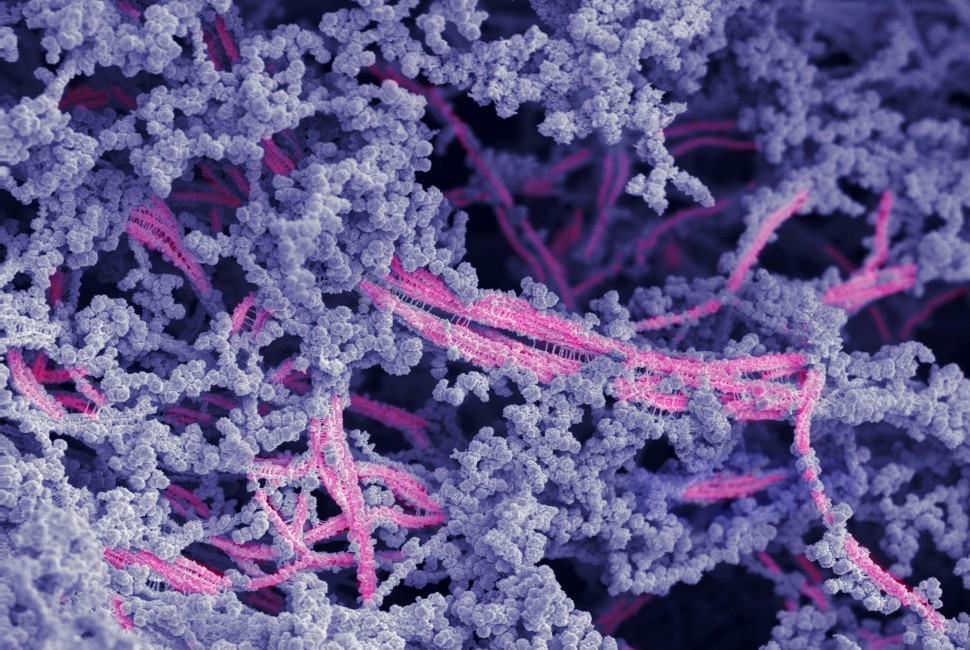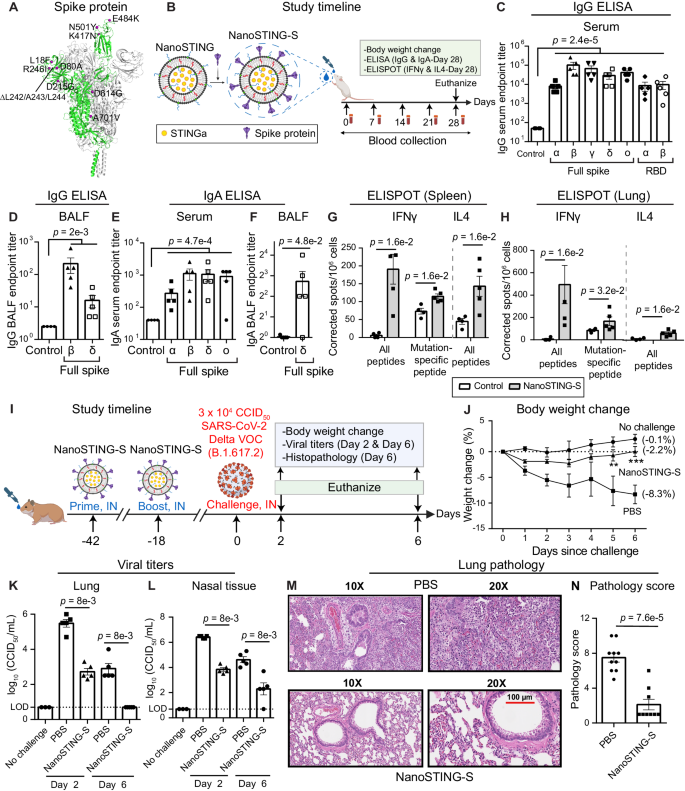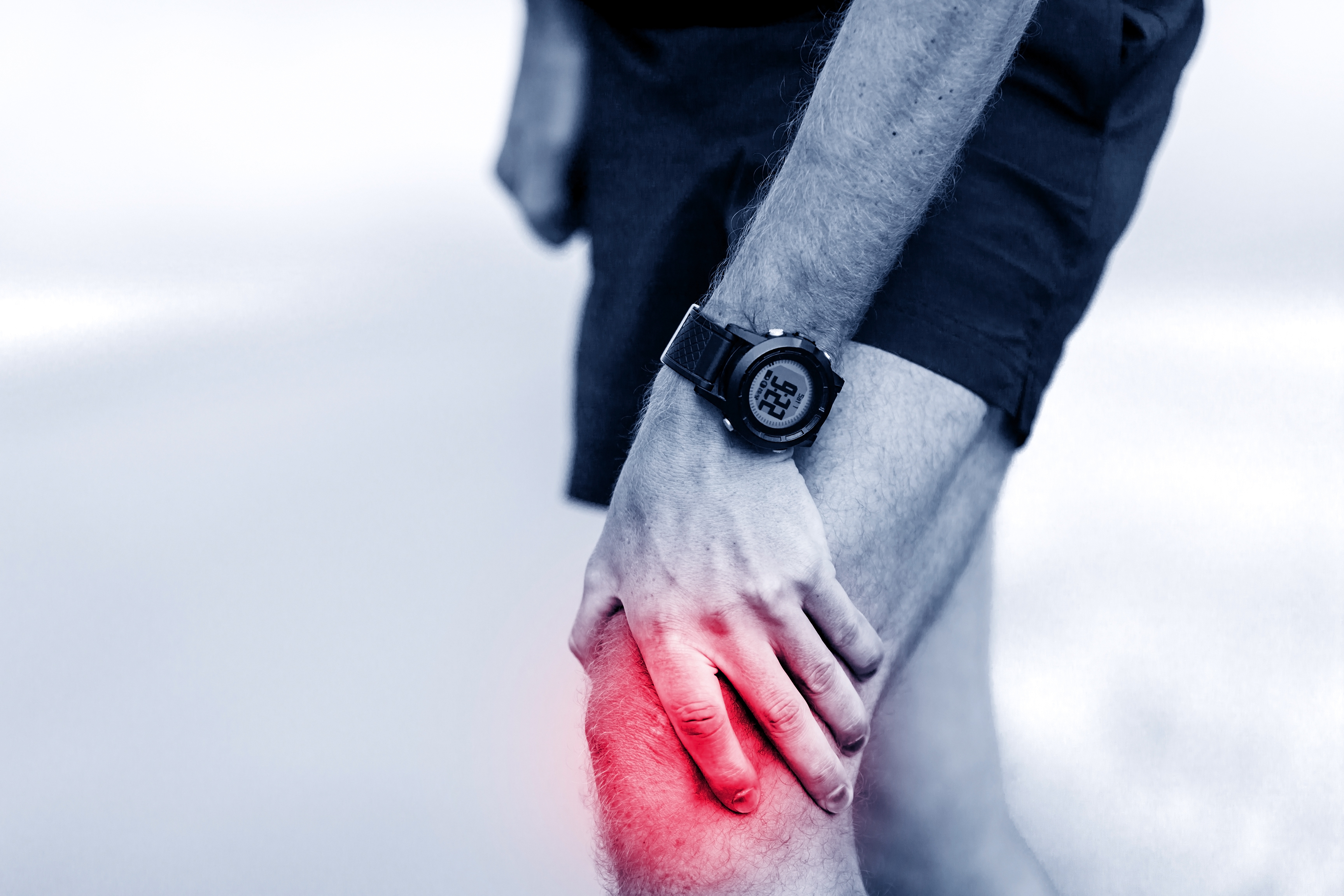2024-08-05 ノースウェスタン大学
 Microstructure of the new bioactive material. The fibers are in pink; hyaluronic acid is shown in purple. Image by the Stupp Group
Microstructure of the new bioactive material. The fibers are in pink; hyaluronic acid is shown in purple. Image by the Stupp Group
<関連情報>
- https://news.northwestern.edu/stories/2024/august/new-biomaterial-regrows-damaged-cartilage-in-joints/
- https://www.pnas.org/doi/10.1073/pnas.2405454121
ヒツジモデルにおける軟骨修復のための生物活性超分子および共有結合ポリマー足場 A bioactive supramolecular and covalent polymer scaffold for cartilage repair in a sheep model
Jacob A. Lewis https://orcid.org/0000-0001-9945-0017, Brett Nemke, Yan Lu, +9, and Samuel I. Stupp
Proceedings of the National Academy of Sciences Published:August 6, 2024
DOI:https://doi.org/10.1073/pnas.2405454121
Significance
Developing scaffolds that support growth of articular cartilage is an important therapeutic goal since this tissue lacks intrinsic ability to regenerate in adult humans. Experimental scaffolds often fail in large-animal preclinical models possibly due to the high mechanical forces encountered. We report here on the use of a supramolecular-covalent polymer hybrid scaffold containing filamentous assemblies of peptide amphiphile molecules that bind transforming growth factor β-1 and hyaluronic acid. These injectable scaffolds showed improved mechanical resilience and formed bundled supramolecular filaments, a structural motif observed in native cartilage. We found that the hybrid scaffold placed in osteochondral defects in sheep—an animal model whose joints experience similar loading to humans— induced repair of hyaline cartilage in mechanically loaded joint surfaces.
Abstract
Regeneration of hyaline cartilage in human-sized joints remains a clinical challenge, and it is a critical unmet need that would contribute to longer healthspans. Injectable scaffolds for cartilage repair that integrate both bioactivity and sufficiently robust physical properties to withstand joint stresses offer a promising strategy. We report here on a hybrid biomaterial that combines a bioactive peptide amphiphile supramolecular polymer that specifically binds the chondrogenic cytokine transforming growth factor β-1 (TGFβ-1) and crosslinked hyaluronic acid microgels that drive formation of filament bundles, a hierarchical motif common in natural musculoskeletal tissues. The scaffold is an injectable slurry that generates a porous rubbery material when exposed to calcium ions once placed in cartilage defects. The hybrid material was found to support in vitro chondrogenic differentiation of encapsulated stem cells in response to sustained delivery of TGFβ-1. Using a sheep model, we implanted the scaffold in shallow osteochondral defects and found it can remain localized in mechanically active joints. Evaluation of resected joints showed significantly improved repair of hyaline cartilage in osteochondral defects injected with the scaffold relative to defects injected with the growth factor alone, including implantation in the load-bearing femoral condyle. These results demonstrate the potential of the hybrid biomimetic scaffold as a niche to favor cartilage repair in mechanically active joints using a clinically relevant large-animal model.


